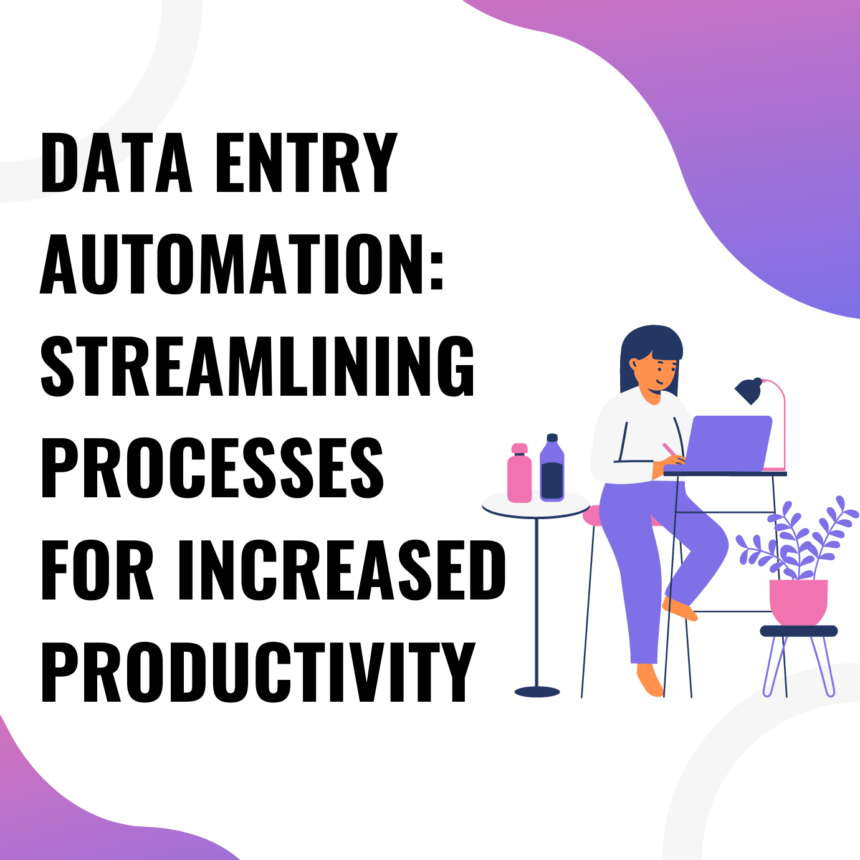Data entry automation is a game-changer for businesses looking to streamline processes, reduce manual effort, and boost productivity. By leveraging technology and automated tools, organizations can minimize errors, save time, and focus on more value-added tasks. Here are the key benefits and strategies for implementing data entry automation to increase productivity:
1. Increased Efficiency and Speed: Automation eliminates the need for manual data entry, allowing for faster and more efficient processing. By automating repetitive tasks, businesses can save significant time and allocate resources to other critical areas of their operations.
2. Improved Accuracy and Data Quality: Automated data entry reduces the likelihood of human errors that often occur during manual data entry. With predefined rules and validations, data accuracy is enhanced, leading to improved data quality and reliability.
3. Integration with Existing Systems: Implement automation tools that seamlessly integrate with your existing systems, such as customer relationship management (CRM) software, enterprise resource planning (ERP) systems, or data management platforms. Integration ensures smooth data flow between systems, eliminating the need for manual data transfer and reducing the risk of errors.
4. Optical Character Recognition (OCR): OCR technology converts scanned or printed documents into editable digital formats. By leveraging OCR tools, businesses can automate the extraction of data from physical documents such as invoices, forms, or contracts, saving time and reducing manual entry errors.
5. Robotic Process Automation (RPA): RPA software can mimic human actions and interact with applications to perform repetitive data entry tasks. By creating software robots, businesses can automate data entry workflows, including copying and pasting data, form filling, and data validation.
6. Application Programming Interfaces (APIs): APIs allow different software systems to communicate and share data seamlessly. By integrating APIs into your data entry processes, you can automate data exchange between various applications, reducing the need for manual data entry and improving data accuracy.
7. Intelligent Data Capture: Intelligent data capture solutions use advanced technologies like machine learning and natural language processing to automate the extraction and interpretation of data from unstructured documents. These tools can automatically identify relevant data fields and extract information with high accuracy.
8. Data Validation and Error Handling: Implement automated data validation rules and error handling mechanisms to ensure data integrity. By validating data against predefined rules, businesses can identify and rectify errors or anomalies in real-time, minimizing the risk of incorrect or incomplete data.
9. Data Security and Access Controls: Establish proper data security measures and access controls when implementing data entry automation. Limit access to sensitive data, encrypt data transmissions, and regularly monitor and audit automated processes to ensure data security and compliance with regulations.
10. Continuous Monitoring and Maintenance: Regularly monitor and maintain automated data entry processes to ensure their effectiveness. Periodically review and update rules, validations, and integration points to adapt to changing business requirements and data sources.
11. Training and Change Management: Provide training and support to employees involved in the automated data entry processes. Help them understand the benefits and functionalities of automation tools and address any concerns or challenges they may face during the transition.
12. Data Backup and Disaster Recovery: Establish proper data backup and disaster recovery mechanisms to safeguard data. Ensure that automated data entry processes include backup procedures and regular data backups to
